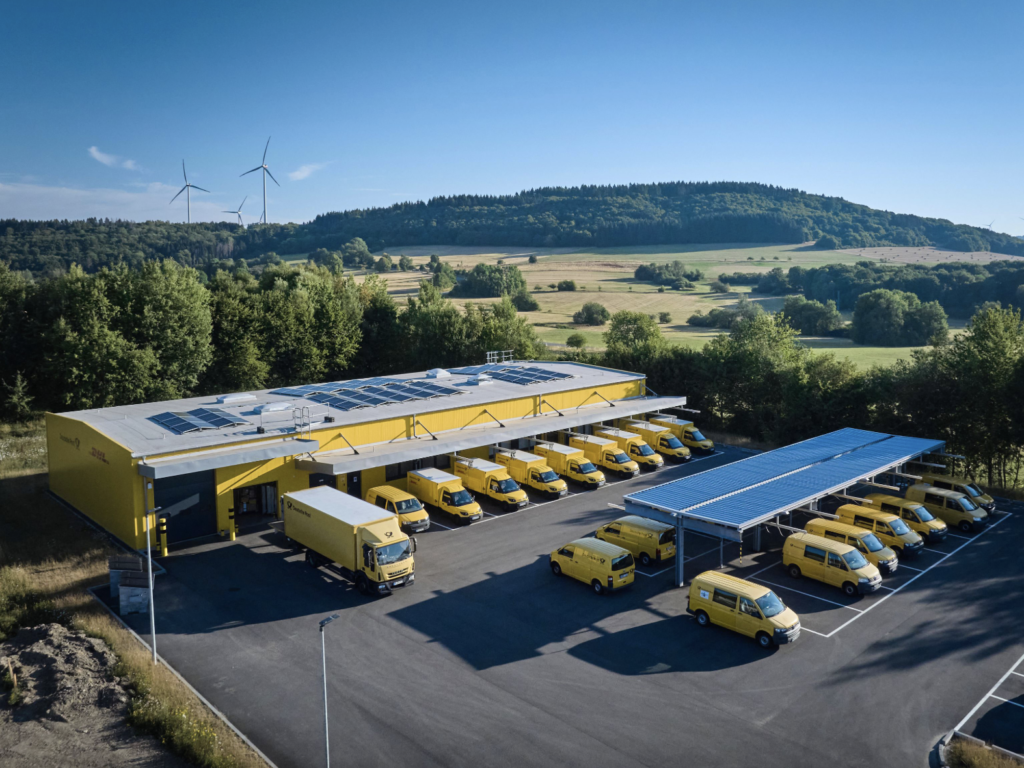The electrification of logistics fleets is entering a new phase. DHL Group’s Post & Parcel Germany division, together with its e-vehicle subsidiary StreetScooter and engineering partner IAV, has completed the rollout of an intelligent charging and load management system for 35,000 electric vehicles across Germany. What started as a pilot with 600 vehicles has now evolved into one of Europe’s largest integrated fleet-energy ecosystems — and it is now also available to third-party customers.
For logistics professionals, this marks a significant shift: electric fleets are no longer just about vehicles and chargers, but about managing energy as a strategic asset.
From Charging Infrastructure to Energy Intelligence
The new system enables smart charging, which avoids expensive load peaks and optimizes energy use across all depots. By intelligently controlling energy flows, DHL can minimize grid stress and reduce energy costs while maintaining complete operational reliability — a critical factor in time-sensitive parcel and mail operations.
The system also facilitates easy integration of renewable power and local energy storage. Solar panels, stationary batteries, and even heat pumps can be orchestrated on one platform. That means depots can increasingly rely on self-generated electricity, reducing their dependency on volatile grid tariffs and enhancing resilience during peak load periods.
Thomas Schlickenrieder, Senior Vice President, Infrastructure Operations of Post & Parcel Germany, emphasizes the strategic importance:
“With over 35,000 electric vehicles, we needed an intelligent, stable charging and load management system deeply integrated into our daily operations. Our in-house solution reduces energy costs, accelerates electrification, and ensures operational stability.”
Adaptive Charging — Data-Driven and Dynamic
The new platform goes far beyond simple load balancing. Through live data exchange with vehicles and the depot backend, it creates dynamic 24-hour charging plans based on real-time energy demand, route schedules, and vehicle states of charge. The system continuously adapts to external factors such as ambient temperature or pre-conditioning needs, ensuring vehicles are ready for operation when needed while minimizing idle time and energy waste.
Defined interfaces enable the system to connect with external analytics and monitoring tools. This allows transparent reporting on energy consumption, vehicle utilization, and infrastructure performance — key data points for optimizing fleet operations and energy management.

A Scalable Model for the Logistics Sector
Rainer Wode, COO of StreetScooter GmbH, sees this rollout as a milestone:
“After 15 years of experience in e-mobility, we are proud to offer this innovative solution to third-party customers. It combines operational excellence with energy intelligence.”
IAV’s Michael Gröschel highlights the technical robustness of the platform:
“The system ensures maximum reliability in fleet operations and meets the latest IT standards. It’s future-proof and fully adaptable to customer-specific needs.”
The Takeaway for Logistics Leaders
The DHL-IAV-StreetScooter collaboration shows where fleet electrification is heading:
- Energy is part of the logistics chain — managing it smartly is key to cost control and reliability.
- Integration beats fragmentation — vehicles, chargers, batteries, and renewables work best within a single, orchestrated system.
- Data unlocks value — live monitoring and analytics turn charging from a constraint into a planning tool.
- Scalability matters — systems built for 35,000 vehicles can easily support other fleets and industries.
For logistics companies planning large-scale electrification, DHL’s example sets a new standard. The future of e-mobility will depend not just on how we charge, but on how intelligently we manage the energy behind every delivery.
